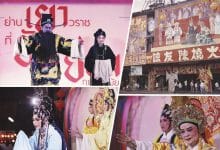Royal romance evolution: One man, many wives fades within 60 years in Thailand

From the era of Rama V with multiple wives to the era of Rama VII with a single wife, why did the perception of one man, many wives vanish within 60 years?
Aside from his work in reforming the nation and abolishing slavery, another facet of King Chulalongkorn, Rama V, is most remembered from our textbooks, his position as the king with the most consorts and concubines in Thai history, a total of 152.
In the past, it wasn’t just the laws of the era that allowed men to have multiple wives. The number of spouses also served as a way for men to display their status, both economically and socially. It was an age-old norm that dated back to the Sukhothai era, extending to the early Rattanakosin era, where marriage was used as a tool to reinforce political power.
It could be said that having multiple wives in that era was not just a common value, it became a tradition in the Siamese nobility.
This raises the question as to why, within approximately 60 years from the reign of Rama V to the constitutional changes in 1932, the concept of monogamy became the main value of Thai society.
If the question is whether the monogamy in Thailand resulted from Siam’s adaptation to survive from the encroachment of Western powers, the answer wouldn’t be a resounding yes. But it cannot be denied that one of the sparks that ignited some Siamese to recognise the existence of a system other than polygamy was indeed the role of Westerners.
Historical Era
Looking back to the era of Rama IV, Dan Beach Bradley or Doctor Bradley was one of the first Westerners to attempt to promote the idea of monogamy through newspapers. He also criticised the king, claiming that Rama IV had more royal consorts than King Rama III.
This caused such a stir that it reached Rama IV, who had to “correct the news” and even retorted Bradley by saying that he should stop the high-ranking nobles from offering their daughters as concubines to the king.
However, Bradley’s efforts were not based on gender equality. They reflected his Christian beliefs as a missionary. When it came to Rama V’s era, there were reforms in education following the Western model, and a large number of elite children were sent to study in Europe.
The liberal ideas that came back to Thailand with these young intellectuals caused the polygamous system to waver. Thai literature of that era began to critique societies that allowed men to have multiple wives, using stories of disadvantaged minor wives. However, the concept of monogamy was still widely rejected by many as being foreign to Thai society.
Prince Damrong Rajanubhab once said, “If we are to have only one wife, our country is not ready yet, it will cause people to suffer.”
Another significant turning point was during the reign of Rama VI.
Polygamy to monogamy
Rama VI, although he had four consorts, expressed his view towards the polygamous system as an outdated tradition, less civilised than the Westerners who only showed one wife publicly.
There were attempts to amend the marriage laws during Rama VI’s reign when the government was trying to reform Thai laws to gain judicial sovereignty. Prince Svasti Sophon was one of the nobles who fully supported the monogamy system.
He suggested that it was not necessary to strictly follow the Western model but could adopt the Japanese way, which, while embracing monogamy, also allowed registration for children born out of wedlock. However, Rama VI disagreed for several reasons, both socially and religiously. He believed that issuing laws merely to open up options for non-compliance is a degradation of the law.
When the king clearly showed his disagreement, the debate on this issue ended. The proposed law was revisited during the reign of King Rama VII, but even then, the majority initially favoured allowing men to have multiple wives.
It wasn’t until after the constitutional changes in 1932 that men were legally allowed only one wife. Yet, the concept of monogamy was not immediately accepted. However, it can no longer be said that Thais did not open up to this idea. By that time, the seeds of feminism had been sown in Thai society.
In the period from 1907 to 1930, middle-class women began to propagate new moral values that differed from other classes, especially the upper class. They began to critique the male-dominated system and wrote about gender inequality. They also tried to spread ideas about the rights women should have, reported Sanook.
While the king, nobility, and ruling class may have been key mechanisms in pushing policies to dismantle the polygamous system, the real cultural change came from the thoughts and feelings of those who were oppressed, the women who grew up under the polygamous system.
Follow more of The Thaiger’s latest stories on our new Facebook page HERE.
Latest Thailand News
Follow The Thaiger on Google News:


























